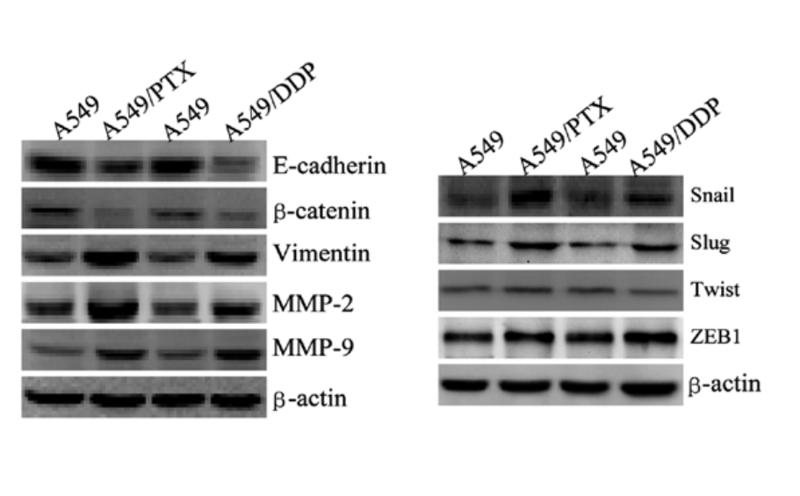Caspase 10 Antibody - #AF0122
| Product: | Caspase 10 Antibody |
| Catalog: | AF0122 |
| Description: | Rabbit polyclonal antibody to Caspase 10 |
| Application: | WB IHC IF/ICC |
| Cited expt.: | WB |
| Reactivity: | Human, Mouse |
| Prediction: | Horse, Rabbit, Xenopus |
| Mol.Wt.: | 60kDa; 59kD(Calculated). |
| Uniprot: | Q92851 |
| RRID: | AB_2833306 |
Related Downloads
Protocols
Product Info
*The optimal dilutions should be determined by the end user. For optimal experimental results, antibody reuse is not recommended.
*Tips:
WB: For western blot detection of denatured protein samples. IHC: For immunohistochemical detection of paraffin sections (IHC-p) or frozen sections (IHC-f) of tissue samples. IF/ICC: For immunofluorescence detection of cell samples. ELISA(peptide): For ELISA detection of antigenic peptide.
Cite Format: Affinity Biosciences Cat# AF0122, RRID:AB_2833306.
Fold/Unfold
ALPS2; Apoptotic protease Mch-4; CASP 10; CASP-10; CASP10; CASPA_HUMAN; Caspase 10 apoptosis related cysteine peptidase; Caspase-10 subunit p12; FADD like ICE2; Fas associated death domain protein; FAS-associated death domain protein interleukin-1B-converting enzyme 2; FLICE 2; FLICE2; ICE like apoptotic protease 4; ICE-like apoptotic protease 4; Interleukin 1B converting enzyme 2; MCH 4;
Immunogens
A synthesized peptide derived from human Caspase 10, corresponding to a region within C-terminal amino acids.
Detectable in most tissues. Lowest expression is seen in brain, kidney, prostate, testis and colon.
- Q92851 CASPA_HUMAN:
- Protein BLAST With
- NCBI/
- ExPASy/
- Uniprot
MKSQGQHWYSSSDKNCKVSFREKLLIIDSNLGVQDVENLKFLCIGLVPNKKLEKSSSASDVFEHLLAEDLLSEEDPFFLAELLYIIRQKKLLQHLNCTKEEVERLLPTRQRVSLFRNLLYELSEGIDSENLKDMIFLLKDSLPKTEMTSLSFLAFLEKQGKIDEDNLTCLEDLCKTVVPKLLRNIEKYKREKAIQIVTPPVDKEAESYQGEEELVSQTDVKTFLEALPQESWQNKHAGSNGNRATNGAPSLVSRGMQGASANTLNSETSTKRAAVYRMNRNHRGLCVIVNNHSFTSLKDRQGTHKDAEILSHVFQWLGFTVHIHNNVTKVEMEMVLQKQKCNPAHADGDCFVFCILTHGRFGAVYSSDEALIPIREIMSHFTALQCPRLAEKPKLFFIQACQGEEIQPSVSIEADALNPEQAPTSLQDSIPAEADFLLGLATVPGYVSFRHVEEGSWYIQSLCNHLKKLVPRMLKFLEKTMEIRGRKRTVWGAKQISATSLPTAISAQTPRPPMRRWSSVS
Predictions
Score>80(red) has high confidence and is suggested to be used for WB detection. *The prediction model is mainly based on the alignment of immunogen sequences, the results are for reference only, not as the basis of quality assurance.
High(score>80) Medium(80>score>50) Low(score<50) No confidence
Research Backgrounds
Involved in the activation cascade of caspases responsible for apoptosis execution. Recruited to both Fas- and TNFR-1 receptors in a FADD dependent manner. May participate in the granzyme B apoptotic pathways. Cleaves and activates caspase-3, -4, -6, -7, -8, and -9. Hydrolyzes the small- molecule substrates, Tyr-Val-Ala-Asp-|-AMC and Asp-Glu-Val-Asp-|-AMC.
Isoform 7 can enhance NF-kappaB activity but promotes only slight apoptosis.
Isoform C is proteolytically inactive.
Cleavage by granzyme B and autocatalytic activity generate the two active subunits.
Detectable in most tissues. Lowest expression is seen in brain, kidney, prostate, testis and colon.
Belongs to the peptidase C14A family.
Research Fields
· Cellular Processes > Cell growth and death > Apoptosis. (View pathway)
· Environmental Information Processing > Signal transduction > TNF signaling pathway. (View pathway)
· Human Diseases > Infectious diseases: Bacterial > Tuberculosis.
· Human Diseases > Infectious diseases: Viral > Hepatitis B.
· Organismal Systems > Immune system > RIG-I-like receptor signaling pathway. (View pathway)
References
Application: WB Species: Human Sample: lung adenocarcinoma cells
Restrictive clause
Affinity Biosciences tests all products strictly. Citations are provided as a resource for additional applications that have not been validated by Affinity Biosciences. Please choose the appropriate format for each application and consult Materials and Methods sections for additional details about the use of any product in these publications.
For Research Use Only.
Not for use in diagnostic or therapeutic procedures. Not for resale. Not for distribution without written consent. Affinity Biosciences will not be held responsible for patent infringement or other violations that may occur with the use of our products. Affinity Biosciences, Affinity Biosciences Logo and all other trademarks are the property of Affinity Biosciences LTD.




